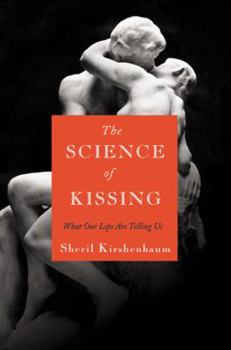The Science of Kissing: What Our Lips Are Telling Us
Select Format
Select Condition 
Book Overview
From a noted science journalist comes a wonderfully witty and fascinating exploration of how and why we kiss. When did humans begin to kiss? Why is kissing integral to some cultures and alien to others? Do good kissers make the best lovers? And is that expensive lip-plumping gloss worth it? Sheril Kirshenbaum, a biologist and science journalist, tackles these questions and more in The Science of a Kiss. It's everything you always wanted to know about kissing but either haven't asked, couldn't find out, or didn't realize you should understand. The book is informed by the latest studies and theories, but Kirshenbaum's engaging voice gives the information a light touch. Topics range from the kind of kissing men like to do (as distinct from women) to what animals can teach us about the kiss to whether or not the true art of kissing was lost sometime in the Dark Ages. Drawing upon classical history, evolutionary biology, psychology, popular culture, and more, Kirshenbaum's winning book will appeal to romantics and armchair scientists alike.
Format:Hardcover
Language:English
ISBN:0446559903
ISBN13:9780446559904
Release Date:January 2011
Publisher:Grand Central Publishing
Length:272 Pages
Weight:0.76 lbs.
Dimensions:1.0" x 5.3" x 7.8"
Customer Reviews
1 rating
Fascinating look inside a normal act
Published by Boogers , 2 years ago
I'm currently doing a lot of research for a book I'm writing that involves a love story with a lot of playing around with psychology and the human experience in general. My character have a very specific, unique way of kissing, so when I ran across this book while browsing, I immediately needed to buy it. The first section of this book (which was not what I was interested in, but in context of the book itself, was necessary) is the history of the kiss in different species (yes! animals!) and cultures, then, the stuff I was MOST excited about: The physiological and psychological benefits and responses to the act & desires. Kirshenbaum has a delightful voice in her writing, and while there is plenty of scientific lingo and referenced studies, it's all still easy to digest for your average joe. Kirshenbaum presents the information and the studies that apply quite clearly, and even goes as far as to say whether or not we can say that the results of the studies are conclusive (some are more than others, which is fascinating in itself). At 214 pages, this book is easy to chow down on, and the way its crafted makes it fun to do so. I highly recommend this for creatives doing any research and anyone even remotely interested in neuroscience and the human experience- it's really cool stuff!







